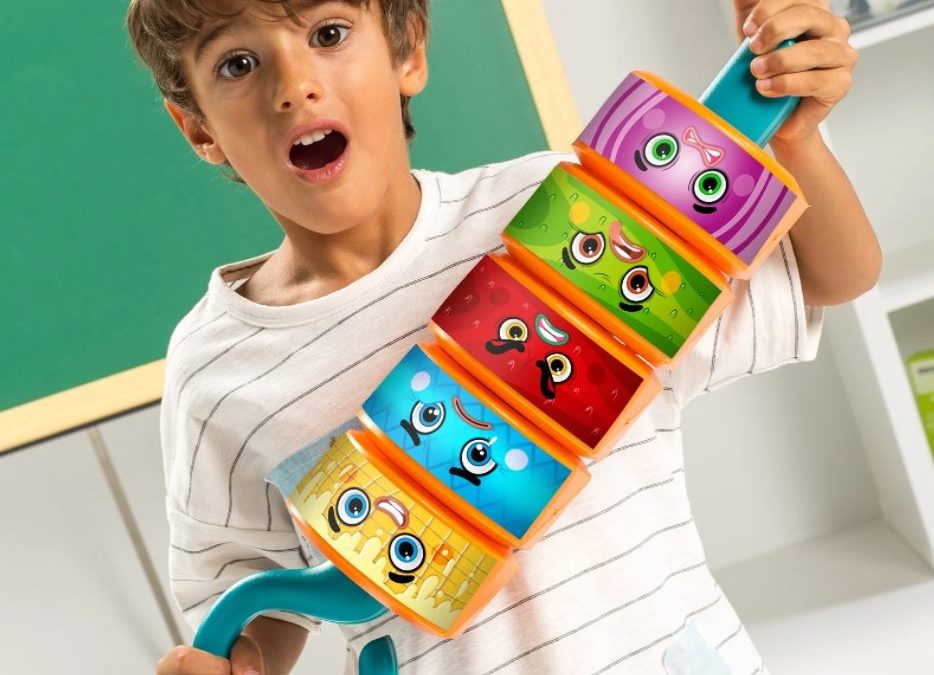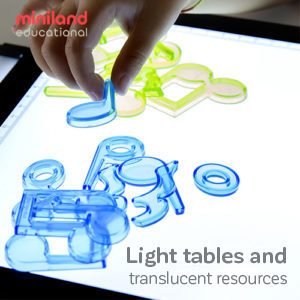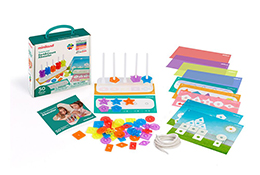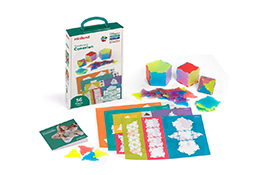This research-based way of teaching social-emotional skills draws on the experience of the collective educational community to ensure you’re never alone in creating a healthy classroom environment, despite the many challenges of 21st-century education.
Why is SEL important?
The fast pace of modernity often leaves children without the traditional social and emotional learning support that stems from integrated community life. As a teacher, you’re most often the person who ends up as the backbone of both a child’s academic and pastoral care. This responsibility can be daunting for even the most well-meaning teacher. That’s why specialty toymakers, like Miniland, have made it their mission to support you in your role as key to your children’s academic success.
How does SEL help you?
An SEL curriculum helps builds a healthy classroom environment because it teaches your children emotional control. Behavioral difficulties most often arise because a child is unable to pick up emotional cues, has trouble with non-verbal communication, or finds regulating their own behavior difficult.

Emotional control has an impact on a child’s ability to learn and develop skills critical to their 21st-century success. Without an ability to navigate their emotions in healthy ways, a child will find it hard to concentrate and be more prone to acting up in class. SEL activities help grow this form of intelligence and also normalize it without singling out any one child.
What does an SEL classroom look like?
Paying attention to SEL doesn’t come at the expense of covering your curriculum. It’s more about the way lessons are presented. For example, these five things go a long way to shaping an SEL-sensitive space:
- Have a consistent schedule: Children rely on boundaries and routine to feel secure in their world. This sense of security allows them to develop resilience to the usual stresses of daily living. Developing a sense of routine can be as simple as having a daily class check-in, where you gather in a circle to share how you feel, and set intentions for the day. A circle at the end of the day can be an opportunity for them to reflect on their day and what they have achieved, and to grow their ability to express emotional experience verbally.
- Encourage non-verbal forms of expression: Artistic, non-verbal expression can lay the groundwork for emotional processing. SEL-classrooms allow children to explore multiple ways of expressing their experiences. Stations with art materials are wonderful ways to invite regular activity that challenges your class to express and explore through non-verbal mediums. Visual arts, dance and music begin to develop a literacy that serves them when dealing directly with emotional extremes.
- Support a sense of community: No person is an island — children who have a strong sense of belonging are happier, and therefore better able to learn. Developing these connections can be as simple as providing opportunities for cooperative play, or can involve more complex planning that ropes in the surrounding school community. Well-coordinated parent-volunteer programs can be a wonderful way to provide children with positive role models. Simply being around means they’ll help by modeling behaviors that normalize emotional experience and positive ways of working with them.
- Host educational activities that develop emotional intelligence: Educational activities that specifically develop emotional intelligence complement the more general opportunities for non-verbal expression we recommend above. Educational toys for kids, like Miniland’s BBQ Emotions!, provide a reliable framework to help your children build common languages around emotional experience. More details on SEL-focused toys are shared in part 2 of this series, which can be found here.

How can educational toys help you?
The magic of well-designed educational toys lies in the way they can be endlessly repurposed to help you deliver the curriculum from any angle. Miniland’s Mindful Kids is designed to facilitate the growth of an SEL cornerstone — mindfulness. These 36 activities promote non-judgemental, focused attention, but they don’t require you to suspend your normal learning day. Instead, they can be used as a learning aid in a number of subjects, ranging from Nature Studies to Physical Education, as they simultaneously grow emotional intelligence.
We’ll be sharing more of Miniland’s SEL-friendly selection in our next blog post, so stay tuned. In the meantime, have a look at our extended catalog.




